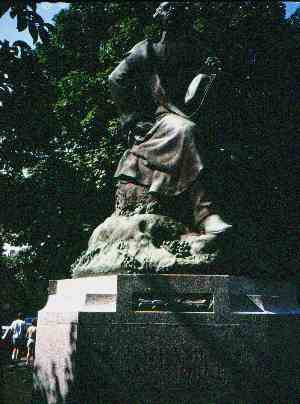
Salem
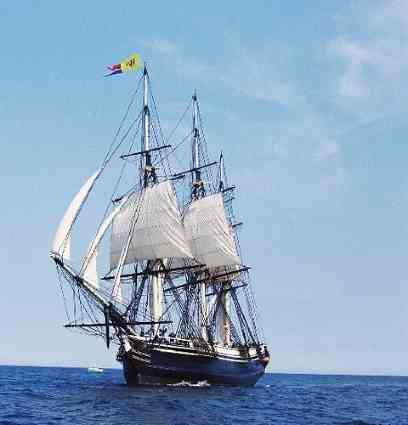
| Route 66 | Cities | Beaches |
 |
Salem |
 |
To get to Salem, you could drive straight through Boston but we don't recommend it. We suggest you take Route 3 from Plymouth up to the Alden House stop in Duxbury, then just continue on 3 until it becomes 93 which turns into 95. This is the city bypass. Follow it on around until 95 finally heads off northward, then take 114 into Salem. It will take about an hour from the Alden House unless you hit rush hour traffic after 4 pm. Salem will remind you of Plymouth in several ways. The colony was established in the 1620s and there is an Old Salem Village. There's the Essex Museum, an old sailing ship (above right), a historic waterfront, famous homes, plenty of statues and memorials, and a whole economy based on historic tourism. However, Salem is quite different, too. Spending two days there gives you a whole different view of Colonial America. |
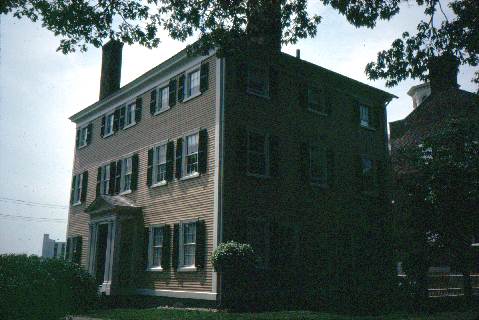 |
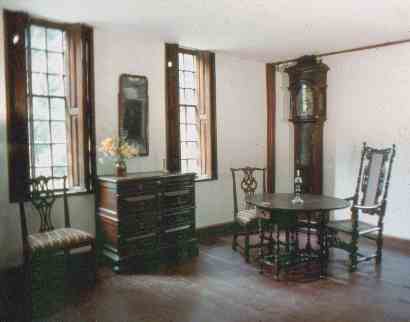 |
First, Salem was the next great chapter in the Massachusetts Bay Colony. With the Pilgrims establishing their colony in Plymouth, the Puritans in 1626 chose Salem Harbor as the site for theirs. As it turned out, the Puritans made the better choice. Salem Harbor was much wider and deeper, which allowed Salem to become much more prosperous. After another rough first few Winters, Salem became the richest community in the world for a century. The first mansion in North America, the House of Seven Gables, was built in Salem. Nathaniel Hawthorne (top left) made Salem the literary center of America. While Plymouth continued to prosper as a farming community, Salem became the first business and industrial capital of New England. The Salem Custom House, by imposing tariffs on all cargo coming in or going out of the harbor, was in effect the first taxing entity in America. And while the Pilgrims had come to America for religious reasons, it would be the Puritans in Salem that would demonstrate true religious fanaticism. Through their belief that Work was how man earned favor in the eyes of God, they laid the foundation for American enterprise. The Pilgrims were fairly humble, and were content to become prosperous farmers, while their brethren in Salem felt Wealth showed how God blessed his followers as they founded a nation based on his Word. |
Second, Salem became the world capitol of sailing, shipping and American industry. In a day of dowdy, slow and awkward boats, the Puritans created the Clipper Ship. Fast, seaworthy and beautiful, it allowed men to reach the far corners of the Earth. The East India Tea Company and others in Salem sent their ships to every port in Europe and the Mediterranean, Africa and the Far East. They brought back silks, teas, and the strange white Oriental porcelain the Puritans named China, became the greatest traders in the world, and used the profits to build some of the most beautiful homes in America. The Friendship, pictured at top right, sits today at Pickering Wharf, is open for on board visits, and takes cruises out on Massachusetts Bay. Salem is still a sailing center. On a typical day you will see fishing boats coming and going, larger sailing vessels heading to Boston, Gloucester or Provincetown, and small ones tacking back and forth across the Harbor. Salem is still a fishing port and is, like Plymouth, just off the rich whaling and fishing grounds of the Stellwagen Banks and Georges Bank. So Salem is worth visiting just for its maritime heritage. Indeed, the National Park Service administers the assortment of buildings, ships and docks as the Salem National Waterfront. Much of the money behind the northern half of the American Revolution came from Salem. Once Bostonians figured out how to drain the swamps and get rid of the clouds of mosquitoes, their larger and deeper harbor sidelined Salem just as Salem's had sidelined Plymouth. But Salem by the late 1600s was a prosperous town when Boston was still a bug infested marsh, and it did not yield its leadership without a prolonged struggle. America was well into the 19th Century before it was clear that Boston, not Salem, would become the dominant New England city. Salem today has the largest collection anywhere of classic federalist architecture, and its homes on and near Derby Street are the first wealthy neighborhood in America. For 200 years Salem was the busiest port in North America. Salem also sent more men to Lexington and the opening day of the American Revolution, and had more men killed there, than any other town. |
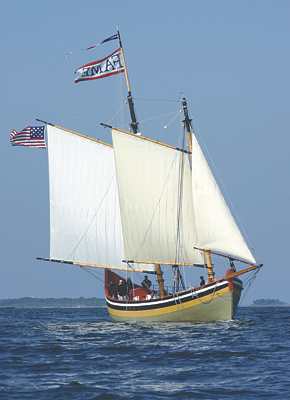 |
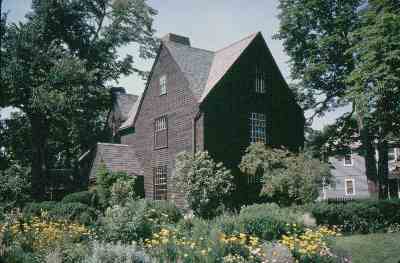 |
Ironically, Salem became famous for the Witchcraft Trials of 1690-92, and they didn't even occur in Salem. In the 1600s, Salem Port ("Salem By The Sea") was the town we know today, and Salem Towne (short for Township) was the isolated rural area a day's wagon ride inland. The people of Salem were much too busy making money to waste time with petty church politics and family feuds. Those obsessed the farmers out in Salem Township. And those simmering hostilities would breed the witchcraft episodes. When it was all over, the people were so ashamed they changed the name of their community to Danvers. Today, the world knows of the witches of Salem, and since the only community in the area with that name is the seaport, they come there looking for pointy hats and broomsticks. The people of Salem are understandably annoyed by the busloads of Wiccans and other eccentrics who keep showing up dressed all in black. On the one hand, they point them out the highway toward Danvers, but on the other hand some enterprising businessmen have opened several tourist attractions catering to such interests. True Salemites would much prefer tourists come to appreciate their seagoing heritage, literary contributions, and religious, commercial and industrial history. |
|
|||
|